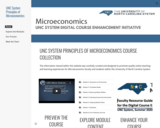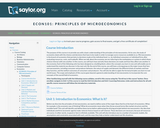
This course is a continuation of the first-semester course titled Introduction to Computer Science I. It will introduce the student to a number of more advanced Computer Science topics, laying a strong foundation for future academic study in the discipline. The student will begin with a comparison between Java--the programming language utilized last semester--and C++, another popular, industry-standard programming language. The student will then discuss the fundamental building blocks of Object-Oriented Programming, reviewing what they have learned learned last semester and familiarizing themselves with some more advanced programming concepts. The remaining course units will be devoted to various advanced topics, including the Standard Template Library, Exceptions, Recursion, Searching and Sorting, and Template Classes. By the end of the class, the student will have a solid understanding of Java and C++ programming, as well as a familiarity with the major issues that programmers routinely address in a professional setting. Upon successful completion of this course, the student will be able to: Demonstrate an understanding of the concepts of Java and C++ and how they are used in Object-Oriented Programming; Demonstrate an understanding of the history and development of Object-Oriented Programming; Explain the importance of the C++ Standard Template Library and how basic components are used; Demonstrate a basic understanding of the importance of run-time analysis in programming; Demonstrate an understanding of important sorting and search routines in programming; Demonstrate an understanding of the generic usage of templates in programming for C++ and Java; Compare and contrast the features of Java and C++. (Computer Science 102; See also: Mathematics 303)
- Subject:
- Applied Science
- Computer Science
- Material Type:
- Full Course
- Provider:
- The Saylor Foundation
- Date Added:
- 04/29/2019





